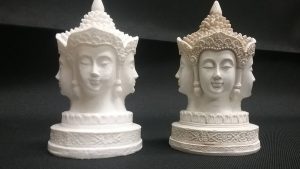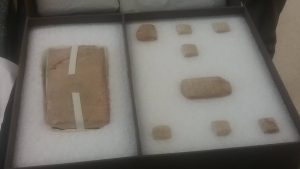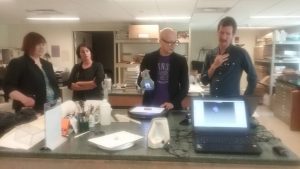What is 3D Printing?
 3D printing, also known as additive manufacturing, is a process of fabrication in which an object is created layer by layer, based on a 3D digital model. A variety of materials and technologies can be used in 3D printing; our printers use a heated extruder to deposit successive layers of plastic to create an object. 3D printing allows you to bring an idea rapidly from concept to reality. You can produce objects that can not easily be created by traditional manufacturing techniques, while maintaining low-cost and high accessibility. Check out 3D Printing Basics: The Free Beginner’s Guide, for more information about a variety of topics related to 3D printing.
3D printing, also known as additive manufacturing, is a process of fabrication in which an object is created layer by layer, based on a 3D digital model. A variety of materials and technologies can be used in 3D printing; our printers use a heated extruder to deposit successive layers of plastic to create an object. 3D printing allows you to bring an idea rapidly from concept to reality. You can produce objects that can not easily be created by traditional manufacturing techniques, while maintaining low-cost and high accessibility. Check out 3D Printing Basics: The Free Beginner’s Guide, for more information about a variety of topics related to 3D printing.
Why is 3D Printing Important in Education?
3D printing has begun to revolutionize numerous industries including manufacturing, medicine, and fashion. The technology has inspired social activism. Organizations like e-NABLE have developed around 3D printing. e-NABLE is a global network of volunteers who create free 3D printed prosthetic hands for those in need. 3D printing is also having an impact in education from primary to university level. Visualizations of complex geometries, molecules, and mathematical relations can be printed and manipulated. Accurate replicas of delicate artifacts can be produced and handled. Iterative design can be practiced with the falling cost of printing. Students exercise and develop critical thinking and problem-solving skills through the rapid development of prototypes to solve real-life problems. From engineering to the liberal arts, 3D printing provides students with new opportunities to experiment, design, and be creative.
Additional Resources
Checkout the websites below for more information about 3D modeling and printing.


 Colgate University’s Special Collections and University Archives houses an array of written materials and items related to the history of the University, and includes a series of Sumerian cuneiforms that date back to approximately 2100 to 2200 B.C. One of the earliest forms of writing, Colgate’s cuneiforms depict the financial transactions of the time. A “traveling” set of the cuneiforms are frequently transported to a variety of classrooms for faculty and students to view.
Colgate University’s Special Collections and University Archives houses an array of written materials and items related to the history of the University, and includes a series of Sumerian cuneiforms that date back to approximately 2100 to 2200 B.C. One of the earliest forms of writing, Colgate’s cuneiforms depict the financial transactions of the time. A “traveling” set of the cuneiforms are frequently transported to a variety of classrooms for faculty and students to view.  On August 17, 2016, Mr. Roy and Mr. Tynes visited the University to 3D scan the “traveling” cuneiforms using two
On August 17, 2016, Mr. Roy and Mr. Tynes visited the University to 3D scan the “traveling” cuneiforms using two